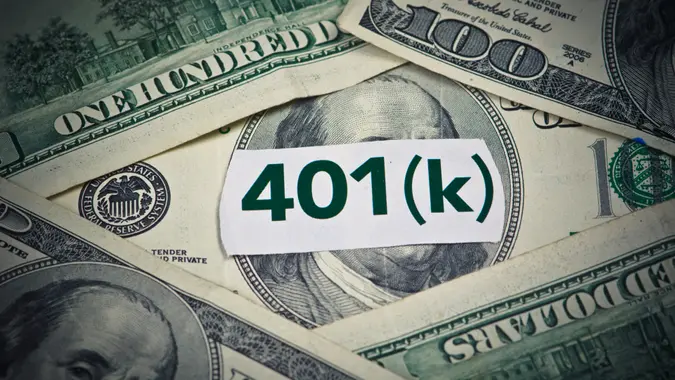7 Key Investments for Boomers Planning To Retire on Their Own

Commitment to Our Readers
GOBankingRates' editorial team is committed to bringing you unbiased reviews and information. We use data-driven methodologies to evaluate financial products and services - our reviews and ratings are not influenced by advertisers. You can read more about our editorial guidelines and our products and services review methodology.

20 Years
Helping You Live Richer

Reviewed
by Experts

Trusted by
Millions of Readers
The best way to plan for retirement is to assume that you’re not going to get any help. Unlike in previous generations, where corporate pensions could be relied upon to provide the bulk of retirement income, savings is much more of a “do-it-yourself” scenario these days. And although Social Security remains a bedrock of the American retirement system, there will undoubtedly be changes to the program in the future, as it’s projected to become insolvent in 2034.
Fortunately, there are plenty of accounts, tools and investments available to help you build a nest egg. Here are some key options for baby boomers looking to retire on their own.
Emergency Fund
An emergency fund won’t technically help you retire. After all, it’s usually invested in a liquid, low-earning savings account. But it’s also a critical cornerstone of your financial plan.
If you run into unexpected expenses during retirement, which is highly likely, an emergency fund can prevent you from going into debt or dipping into your investment accounts. As such, it’s the primary building block that can help you retire on your own. Experts suggest having at least six months worth of expenses in a retirement emergency fund, and one year or more isn’t excessive.
Stocks
While you may want to dial down your risk tolerance a bit as you head into retirement, don’t overdo it. You might need to stretch your money over a multi-decade period extending 20 years, 30 years or even more. With that type of time frame, you generally need to own stocks in your portfolio simply to combat the ravages of inflation. But equities can also boost the value of your assets and enhance your quality of life in retirement. Just be sure that you keep the correct balance of aggressive and conservative investments, in line with your financial objectives and risk tolerance.
Fixed-Income Investments
Bonds, CDs and U.S. Treasuries are more traditional retirement assets that provide more stability than stocks along with regular interest payments. These can be a nice counterweight to the more aggressive, equity portion of your portfolio. While you want to enhance and extend the value of your assets in retirement, you also want to preserve them.
Annuities
Annuities are a good option if your primary concern is that you will outlive your income. Most annuities, after the accumulation period, pay a set amount of income for life, regardless of how long that is. Some provide the option for a joint life payout, meaning your income will continue until your spouse dies as well. While this can be a good solution for some boomer retirees, you should always be on the lookout for high fees and restrictive provisions.
Retirement Accounts
While not strictly speaking an “investment,” a retirement account is a fantastic way to boost your long-term wealth, particularly as you approach retirement. This is because the IRS allows you to contribute extra money to them once you reach age 50.
For IRAs, the allowable catch-up contribution is $1,000, bringing your total maximum contribution to $8,000. For 401(k) plans, you’re allowed to put in an additional $7,500, for a total allowable contribution of $31,000. Those additional amounts can be a significant boon if you’re looking to retire on your own.
Regular Rebalancing
While you shouldn’t be trading your portfolio a lot in retirement, it’s absolutely critical that you keep it on track and in line with your financial plan. This means that you’ll have to regularly tweak your portfolio to keep it in line with your intended asset allocation. While diversification helps de-risk your portfolio, it also means that different portions of your account will perform better or worse than others over time. Eventually, your balance becomes out of whack.
Imagine, for example, that you have a portfolio that’s 60% in stocks and 40% in bonds. If equities have a sharp rally, your account might end up with a 75% weighting in stocks and just 25% in bonds. This fundamentally alters your risk profile and is something you should watch closely.
Holistic Planning
When planning for retirement, it’s important to consider all of your assets and sources of income. In addition to picking traditional investments, consider your Social Security claiming strategy, the equity in your home, your insurance coverage, whether you intend to work a side gig in retirement and what you want to leave to your heirs. All of these factors are important components in developing a successful retirement plan.
 Written by
Written by  Edited by
Edited by 

























